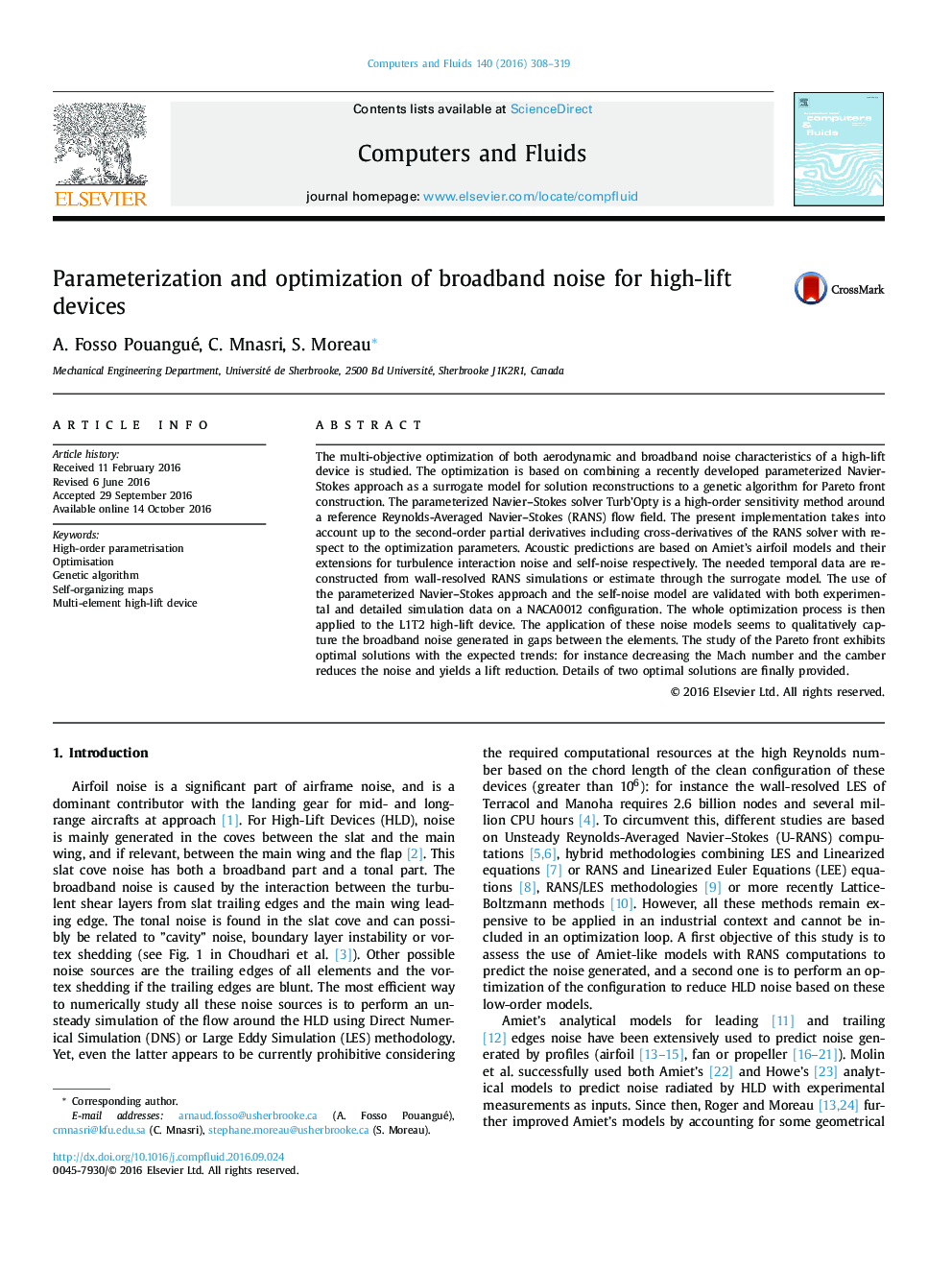| کد مقاله | کد نشریه | سال انتشار | مقاله انگلیسی | نسخه تمام متن |
|---|---|---|---|---|
| 5012055 | 1462671 | 2016 | 12 صفحه PDF | دانلود رایگان |
- MDO/MOO including aerodynamic and aeroacoustic performance of high-lift devices.
- Broadband noise models with flow statistics reconstruction based on RANS results.
- Computational efficiency of optimization with mixed geometric and flow parameters.
- Sensitivity of lift, drag and broadband noise to relative position of slat and flap.
- Importance of high-order derivatives and cross-derivatives on flow features.
The multi-objective optimization of both aerodynamic and broadband noise characteristics of a high-lift device is studied. The optimization is based on combining a recently developed parameterized Navier-Stokes approach as a surrogate model for solution reconstructions to a genetic algorithm for Pareto front construction. The parameterized Navier-Stokes solver Turb'Opty is a high-order sensitivity method around a reference Reynolds-Averaged Navier-Stokes (RANS) flow field. The present implementation takes into account up to the second-order partial derivatives including cross-derivatives of the RANS solver with respect to the optimization parameters. Acoustic predictions are based on Amiet's airfoil models and their extensions for turbulence interaction noise and self-noise respectively. The needed temporal data are reconstructed from wall-resolved RANS simulations or estimate through the surrogate model. The use of the parameterized Navier-Stokes approach and the self-noise model are validated with both experimental and detailed simulation data on a NACA0012 configuration. The whole optimization process is then applied to the L1T2 high-lift device. The application of these noise models seems to qualitatively capture the broadband noise generated in gaps between the elements. The study of the Pareto front exhibits optimal solutions with the expected trends: for instance decreasing the Mach number and the camber reduces the noise and yields a lift reduction. Details of two optimal solutions are finally provided.
Journal: Computers & Fluids - Volume 140, 25 November 2016, Pages 308-319
